Identification of nitric oxide synthase as a protective locus against tuberculosis
- PMID: 9144222
- PMCID: PMC24663
- DOI: 10.1073/pnas.94.10.5243
Identification of nitric oxide synthase as a protective locus against tuberculosis
Abstract
Mutagenesis of the host immune system has helped identify response pathways necessary to combat tuberculosis. Several such pathways may function as activators of a common protective gene: inducible nitric oxide synthase (NOS2). Here we provide direct evidence for this gene controlling primary Mycobacterium tuberculosis infection using mice homozygous for a disrupted NOS2 allele. NOS2(-/-) mice proved highly susceptible, resembling wild-type littermates immunosuppressed by high-dose glucocorticoids, and allowed Mycobacterium tuberculosis to replicate faster in the lungs than reported for other gene-deficient hosts. Susceptibility appeared to be independent of the only known naturally inherited antimicrobial locus, NRAMP1. Progression of chronic tuberculosis in wild-type mice was accelerated by specifically inhibiting NOS2 via administration of N6-(1-iminoethyl)-L-lysine. Together these findings identify NOS2 as a critical host gene for tuberculostasis.
Figures
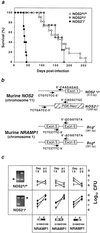
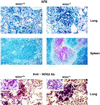
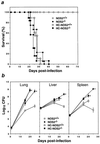
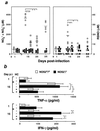
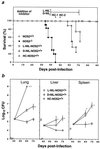
References
Publication types
MeSH terms
Substances
Grants and funding
LinkOut - more resources
Full Text Sources
Other Literature Sources
Medical
Molecular Biology Databases

